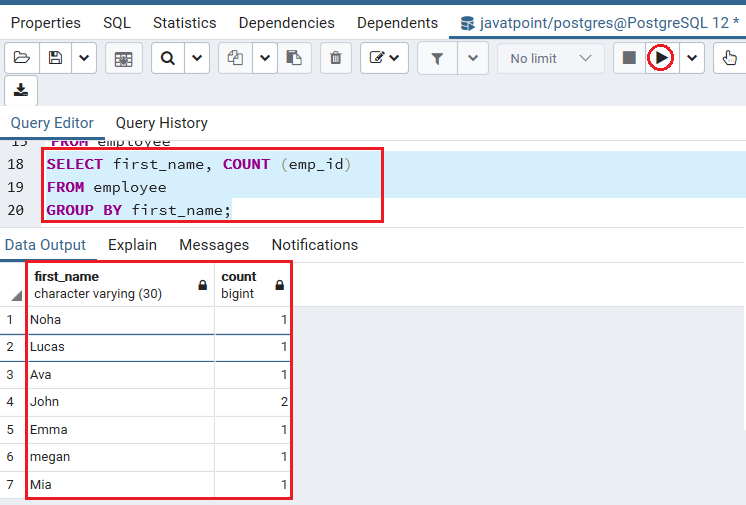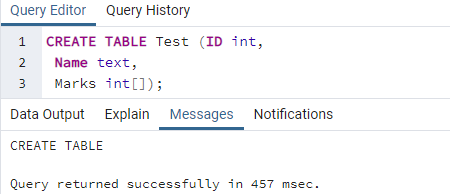

Let’s practice with some examples of using the WHERE clause.
#Postgres in clause how to
Return true if a value is between a range of values How to Create a Conditional WHERE Clause in PostgreSQL PostgreSQL Tips & Tricks Franck Pachot JUnderstanding the conditional WHERE clause in PostgreSQL is crucial when dealing with data that requires dynamic filtering, while keeping a single static SQL statement. Return true if a value matches any value in a list To form the condition in the WHERE clause, you use comparison and logical operators: Operator
Hence, it is not possible to implement and <> operators that do different things. is an alias, which is converted to <> at a very early stage of parsing.#Postgres in clause update
If you use column aliases in the SELECT clause, you cannot use them in the WHERE clause.īesides the SELECT statement, you can use the WHERE clause in the UPDATE and DELETE statement to specify rows to be updated or deleted. In this article, we will walk through the syntax, usage of the HAVING and WHERE clauses, differences between the. <> is the standard SQL notation for not equal. PostgreSQL IN operator is used in a WHERE clause.PostgreSQL evaluates the WHERE clause after the FROM clause and before the SELECT and ORDER BY clause: In other words, only rows that cause the condition evaluates to true will be included in the result set. The query returns only rows that satisfy the condition in the WHERE clause. It can be a boolean expression or a combination of boolean expressions using the AND and OR operators. The condition must evaluate to true, false, or unknown. The WHERE clause uses the condition to filter the rows returned from the SELECT clause.

The WHERE clause appears right after the FROM clause of the SELECT statement.
#Postgres in clause code
So, here we will take the employee table, which we created in the earlier topics of PostgreSQL tutorial.ORDER BY sort_expression Code language: SQL (Structured Query Language) ( sql ) Let us see some examples of having clause in PostgreSQL. The provided context is used for the preparation of the statement, not for the execution of the statement. The WHERE clause is applied to rows only. The HAVING clause is useful to groups of rows. The WHERE clause permits us to filter rows according to a defined condition. The HAVING clause allows us to filter groups of rows as per the defined condition. Let us see the difference between HAVING Clause and WHERE Clause: Having clause Difference between having and where clauses Babelfish for Aurora PostgreSQL DB Cluster version 2.1.2 (PG 14.3) or later. We cannot use the column aliases in the HAVING clause because, when assessing the HAVING clause, the column aliases defined in the SELECT clause are not accessible. The PostgreSQL IN operator is used with the WHERE clause to check against a list of values. In PostgreSQL, the HAVING clause works in below format: Subsequently, the HAVING clause is working before the SELECT clause. Note: In PostgreSQL, we can add other clauses of the SELECT command such as LIMIT, JOIN, and FETCH.


It is used to define a condition which filter the sets. It is used to return rows grouped by column1. The WHERE clause lets you define actual search criteria. In the above syntax, we used the following parameters: Parameters One of the most common and broadly useful ways to indicate your query requirements is the WHERE clause. SELECT column1, aggregate_function (column2)


 0 kommentar(er)
0 kommentar(er)
